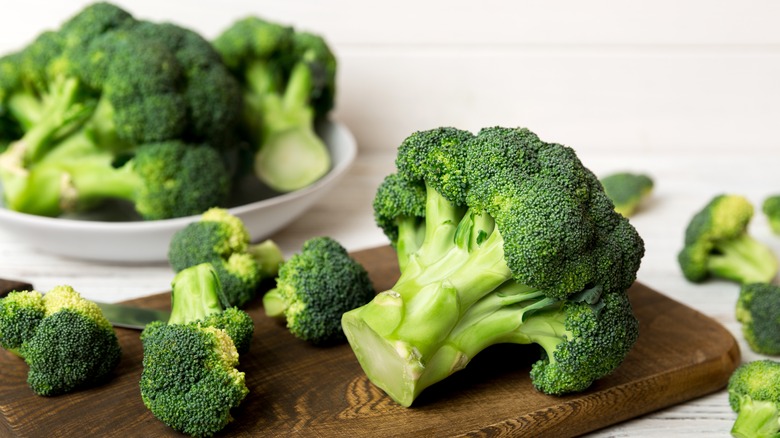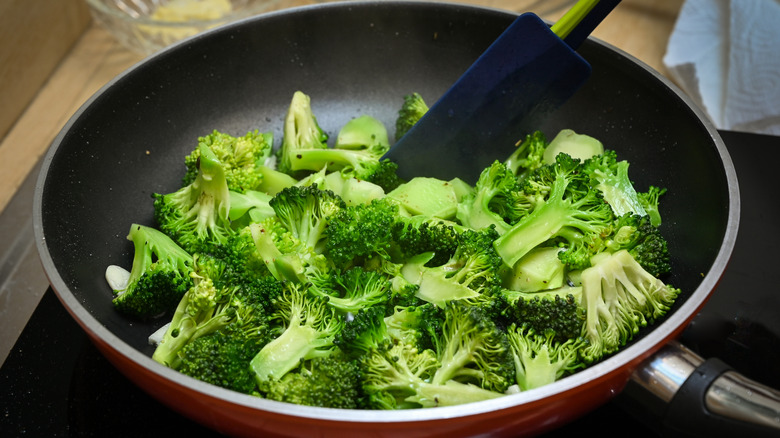Think Twice Before Cooking Your Broccoli Upside Down
Broccoli florets are many people's favorite part of the cruciferous veggie, with their delightfully fluffy yet fibrous texture and a mild vegetal flavor. A popular tip circulating around social media recommends boiling whole broccoli upside down to avoid cooking the stalks, resulting in easier cutting and less mess. While this may sound like a convenient hack, boiling your broccoli upside down won't do your health or tastebuds any favors. Although the florets alone offer a nice texture and plenty of nutrients, the stalks also have health benefits and a delicious flavor of their own that you won't want to miss.
Stalks contain the bulk of broccoli's fiber as well as immunity-boosting and cancer-protective properties. This in conjunction with the vitamin B and mineral-rich florets will provide a much more complete nutrient boost to your meal. Stalks also have a tender and juicy texture with a more mellow flavor than the florets, providing a nice contrast. Plus, cutting the stalk will tack on only a minute or two to your preparation time. The stalks are an edible, nutritious, and yummy part of the vegetable that shouldn't go to waste for the sake of convenience and an unwarrantably bad rap from foodie influencers.
Best cooking methods for broccoli's nutrients and flavors
You don't want boil broccoli in the first place because boiling water draws out and eliminates a portion of beneficial nutrients, leaving you with only a fraction of the veggie's full nutritional content. Luckily, there are plenty of easy and quick cooking methods to showcase broccoli's flavor and texture without sacrificing its nutritional value. The simplest and quickest way to cook broccoli is by steaming it. You can use a steaming basket or fill a pot with an inch of water and place your stalks and florets directly in the shallow water, cover the pot, and cook over medium heat. Steaming broccoli will take around five minutes, resulting in the same tender and juicy texture as boiling.
You can also steam or cook broccoli in the microwave using a similar technique, swapping a pot for an oven-safe bowl that you can loosely cover with a top. Sauteeing is another nutrient-safe method that will also instill novel flavors and textures. You can combine steaming and sauteing to maximize flavor by first sauteing broccoli florets and stalks in olive oil with spices in a saucepan, then add a tablespoon or two of water, lemon juice, or broth and cover the pan for an additional few minutes. Essentially, the shorter the cooking time, the more nutrients a vegetable will retain. Consequently, the smaller you cut your broccoli, the quicker it will cook.

